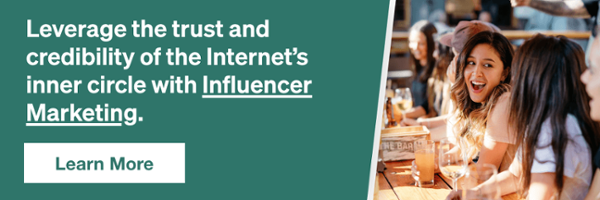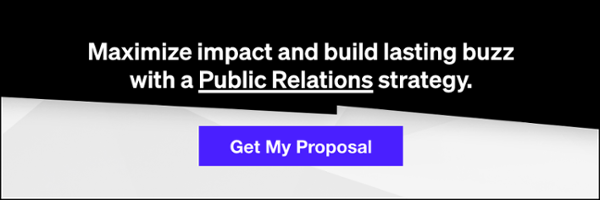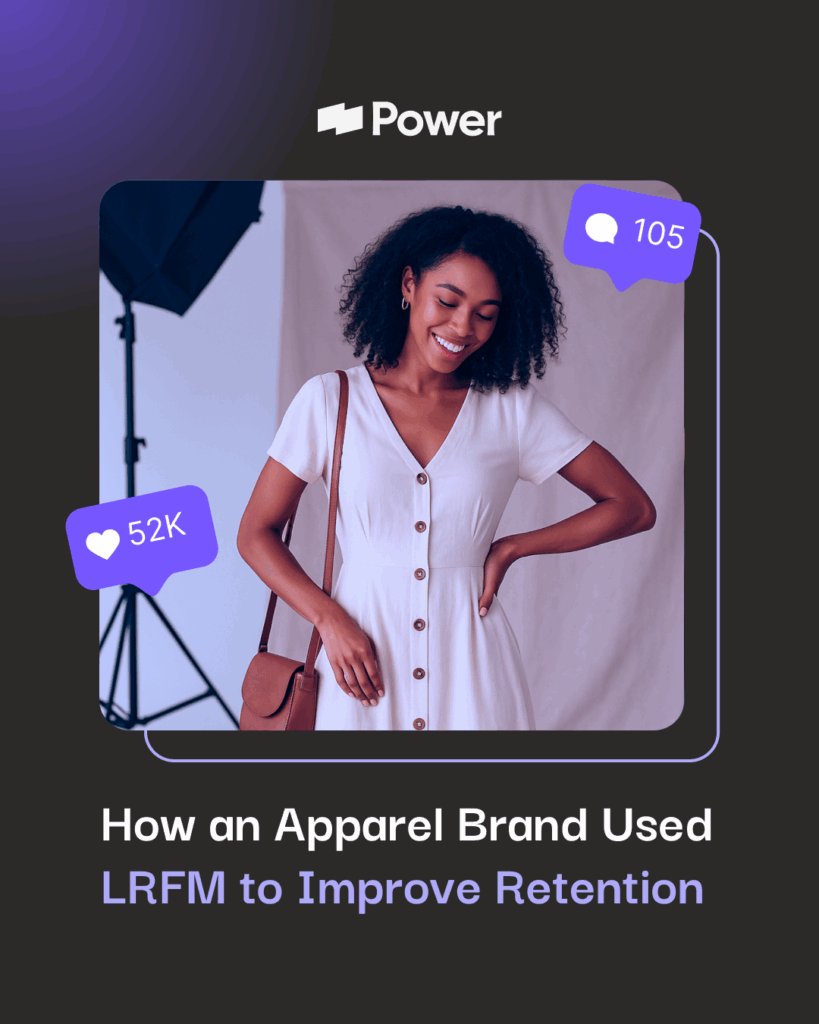To preface this blog post, social media influencers are people who have a large following on social platforms. In addition to that, we qualify influencers as people who not only have a strong social presence, but also have a highly-engaged audience.The engaged audience aspect is critical, as we look for social media gurus who ultimately influence their followers to trust their endorsement is authentic, check out the brands they promote, and convert.
Agencies have been popping up across the U.S. to strictly run influencer campaigns, but many of these campaigns are not valued in terms of conversion opportunities, but rather, brand awareness.
Social Media Influencer Misconception
The primary misconception with social media influencer campaigns is that they are typically aligned with brand awareness. Whether it’s a new brand that is trying to generate buzz or an existing brand trying to appeal to a younger demographic, social media influencers without a doubt have the ability to introduce a product or service to a large audience and increase brand awareness.
Related: Getting Started with Social Media Influencer Outreach
The issue is that brand awareness can only get you so far as a business. Everyone in the world could know about your company, but if no one is actually buying your product or service, then you’re not making money and the awareness level doesn’t matter.
The reason why CEOs and CMOs like marketing channels like PPC is because they are measureable and data-driven. You can see exactly how your campaigns are performing, what the ROI is, and where to increase or decrease adspend.
With influencer campaigns springing up from brands as large as Nike, to brands as small as local juice companies seeding product, the concept of marketing with social media influencers has exploded and has become a great way to build credibility and awareness through Instagram, YouTube, Twitter, and Facebook.
Coupling the noise in the influencer space with influencers who are charging big bucks – we’re talking hundreds of thousands of dollars – how do you justify this type of marketing budget with simply brand awareness? You create an influencer campaign that is measurable and converts.
So, how do you create an influencer program that gets you brand awareness and helps your bottom line? Here are a few tips to ensure you’re driving revenue and making smart investments with influencers.
Create A Partnership, Not One-Off Posts
This is the number one way to move towards a smarter influencer campaign that drives conversion. Would you ever run an ad for one day and expect to see a 400% ROAS? The answer is no; it takes time to optimize campaigns, retarget website visitors, and push them deeper into the marketing funnel.
When you’re thinking about a marketing funnel, think of brand awareness as top of the funnel, meaning not at the purchase decision point. This is the point where the typical social media user is. They’re casually scrolling through their phone and are introduced to brands through influencer marketing.
If someone sees a social media post about a product they are unfamiliar with, they are in the awareness stage. From there, they may dive deeper, but most likely won’t move to the consideration point until they are introduced again. That is why it’s critical to create campaign partnerships with influencers that include more than one post.
To get from brand awareness to purchase takes time and consideration, which is why operating on a one-off post basis isn’t ideal. If your goal is to drive revenue, you should make sure you have multiple touch points with the audience of each influencer you’re working with, meaning they are posting series rather than a standalone post. These additional touchpoints push their followers deeper into the funnel.
How do we know this? We were in the same boat as these other agencies just months ago. When working with clients that have smaller budgets, it makes sense to work more with smaller influencers and aim for quantity, because series of posts will typically mean you have to pay the influencer.
On the other hand, when you have a budget to work with for ongoing partnerships, and are willing to invest in order to see a return on investment, we highly recommend allocating more budget in order to ultimately move the needle. We have successfully seen more website traffic and conversions come through when an influencer we are working with posts their second or third time. Multiple posts lends to credibility and social proof for the brand, which entices their followers to actually convert.
Utilize Linking Whenever Possible
Measurement is one area in which social media influencer marketing professionals have struggled. It’s hard to measure impressions and website traffic when there are limited linking opportunities on social media and typically only a fraction of the influencer’s followers end up seeing their posts. Linking is important in order to measure how your influencer partnerships are performing and get a more accurate representation.
For Instagram, you should be targeting influencers who are set up as business profiles. In order to tell if the influencer has a business profile, there will be an “Email” button beneath their bio as well as a profile description in light grey that says something like “Blogger” within their bio on Instagram.
A business profile means that as long as the influencer has over 10,000 followers, they can include a link within their Instagram stories. You can use this opportunity to provide each influencer a UTM code and track in Google Analytics how it performs. This will show you metrics like traffic, conversions, conversion value, and behavioral metrics like time on site and bounce rate.
Related: How Can Instagram Stories Benefit Your Brand?
On Facebook and YouTube, you should also be using custom UTM codes for each influencer that you encourage them to put within their posts so it is clickable. If you’re not measuring and tracking performance, then you can’t prove any positive results.
Promote Authenticity
Authenticity is what pushes some influencers forward and hinders the long-term growth of others. If you’re pushing a strategy too far with influencers, you threaten seeing a return and can even burn bridges with influencers. Brands that ask too much can get a bad reputation, since the influencer space is very tight-knit. Outside of that, posts that look inauthentic can fall flat.
A few things to keep in mind in order to give the influencers the creative liberty and authenticity they need to communicate to their followers:
- Try to limit the number of talking points, hashtags, and creative direction. You want their spotlight on your brand to look natural and non-salesy. If people feel that something is being shoved down their throats, they probably won’t look into the brand further and won’t move further into your marketing funnel.
- Respect their timelines. Often brands run quick campaigns to saturate a market with the goal of quantity over quality. If you’re working with an influencer who has a strong connection with their audience (as you should), they may be limiting the number of sponsored posts they share in a week or a month and won’t always be able to stick to tight turnarounds. Work with them to create something mutually beneficial that has a reasonable posting timeline.
Your goal should be to create something with this influencer that organically showcases your brand and doesn’t look like a glaring advertisement. Letting them stick to their tone and style is so important to look as natural as possible to their audience.
Choose The Right Influencer
This might seem simple, but it takes more than a quick glance at an influencer’s feed to determine if they’re the right person to be promoting your brand. Make sure you are vetting influencers on metrics other than their number of followers if you want to see results. Just looking at the number of followers could inflate the impact that you think they actually have.
Think about the types of photos they are posting and what type of audience they are attracting. If their posts are very niche-specific and directly relate to your brand then you’re safe. If we take a hypothetical situation of a female swimsuit model who posts the same types of bikini beach photos or videos, then you might think reaching out with female products makes sense.
Think again, this influencer might even have a majority of followers who are male and wouldn’t be interested in your product, but are interested in her bikini shots. The same thing goes for male influencers. Their audience could be heavily-female, so promoting products for men might not actually make sense. You can gage this by looking at who is liking and commenting on the influencer’s posts.
Related: PR Coffee Chat: Understanding Influencer Outreach
On the reverse side, this can be helpful for some brands willing to get creative. Targeting an influencer of the opposite sex than what your brand speaks to in these cases could mean they are getting in front of the right eyes and the right gender to actually convert their audience.
With influencers purchasing followers and even likes, checking the engagement rate of their recent posts is important to determine how engaged their audience truly is and how many people will actually see their post.
You can ask for a breakdown of geographic location as well. If a large majority of their followers are coming from other countries, then it is most likely robot followers that are seemingly boosting their overall reach, but not real people that will be interested in your business.
Unsure about moving forward with a specific influencer who is asking for compensation? Ask them to share with you their engagements metrics on their latest posts! As a business profile on Instagram, they can access not only the number of likes, which is already public to you, but also the number of impressions, reach and total engagement.
Always Be Sure That Your Campaigns Are In Compliance With FTC Regulations
After the FTC sent warning letters to influencers in an effort to crack down on those not following its disclosure regulations, making sure your influencer campaigns are following FTC guidelines is more important than ever. A successful influencer campaign should look organic and natural in order to look as authentic as possible.
Your campaign should, however, ensure that every influencer is posting the appropriate disclosure on social media and online. This means noting that it is a sponsored post. Similar to Google’s no-follow link rule when compensation is involved, brands can get in serious trouble if they are not regulating their sponsored posts to include “ad” or “sponsored” so the influencer’s audience is properly informed.
Choosing The Influencer Strategy That Converts
Generating a return on investment means investing in long-term partnerships with social media influencers. To recap, choose influencers who are committed to their followers and have great engagement, work together on a partnership that is long-term and mutually beneficial, don’t hesitate to ask for their metrics, and always use linking whenever possible.
Related: Mastering the Art of Instagram Influencer Marketing
Working with influencers can make a huge impact on your business if done correctly. When you’re looking for an influencer marketing agency or team, don’t be afraid to ask them how they are measuring ROI and what their influencer strategy looks like.
As an agency that has approached influencer marketing in different ways for different clients, we understand the importance of creating real relationships and partnerships between our clients and influencers. The bottom line is that clients want to see a return on investment with every marketing channel, from PR, to PPC, to social media. With each of these initiatives, it takes an investment to see the return and it’s not a simple bait and switch. Marketing campaigns span months for a reason; it takes time to develop and see the results.









